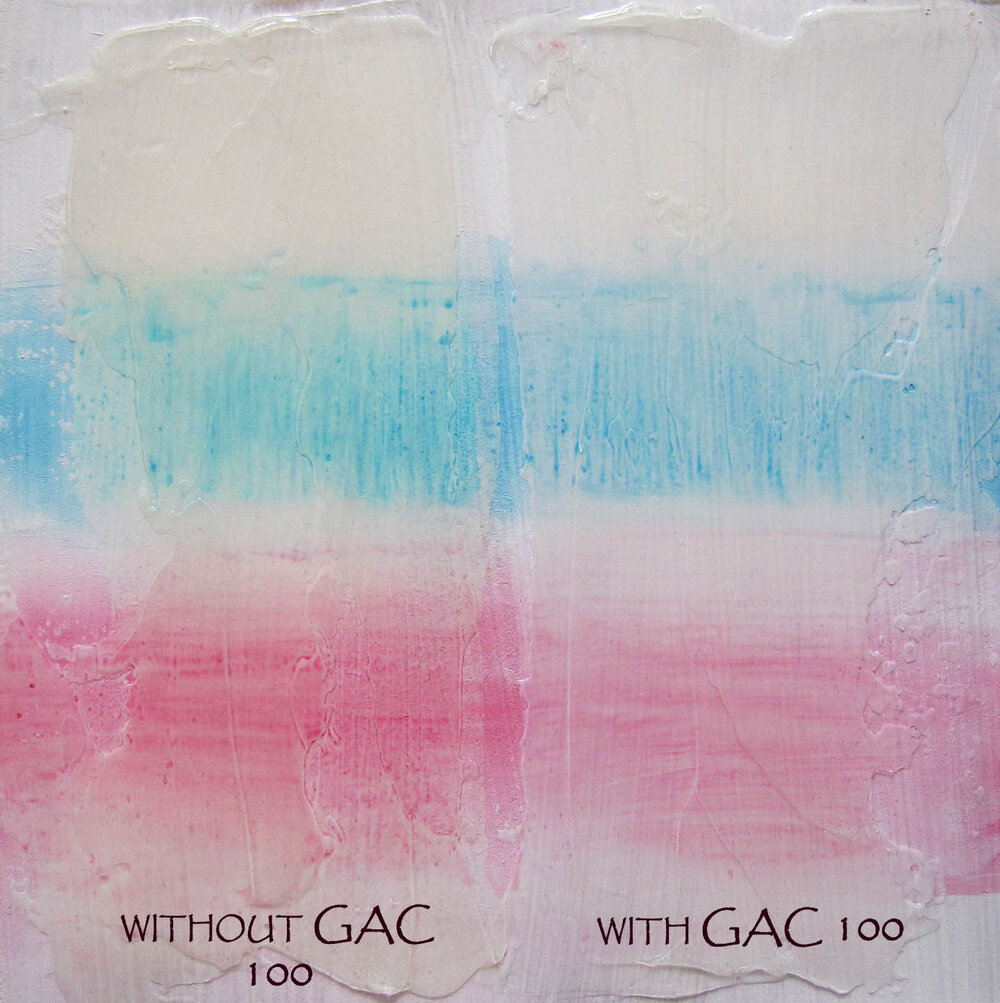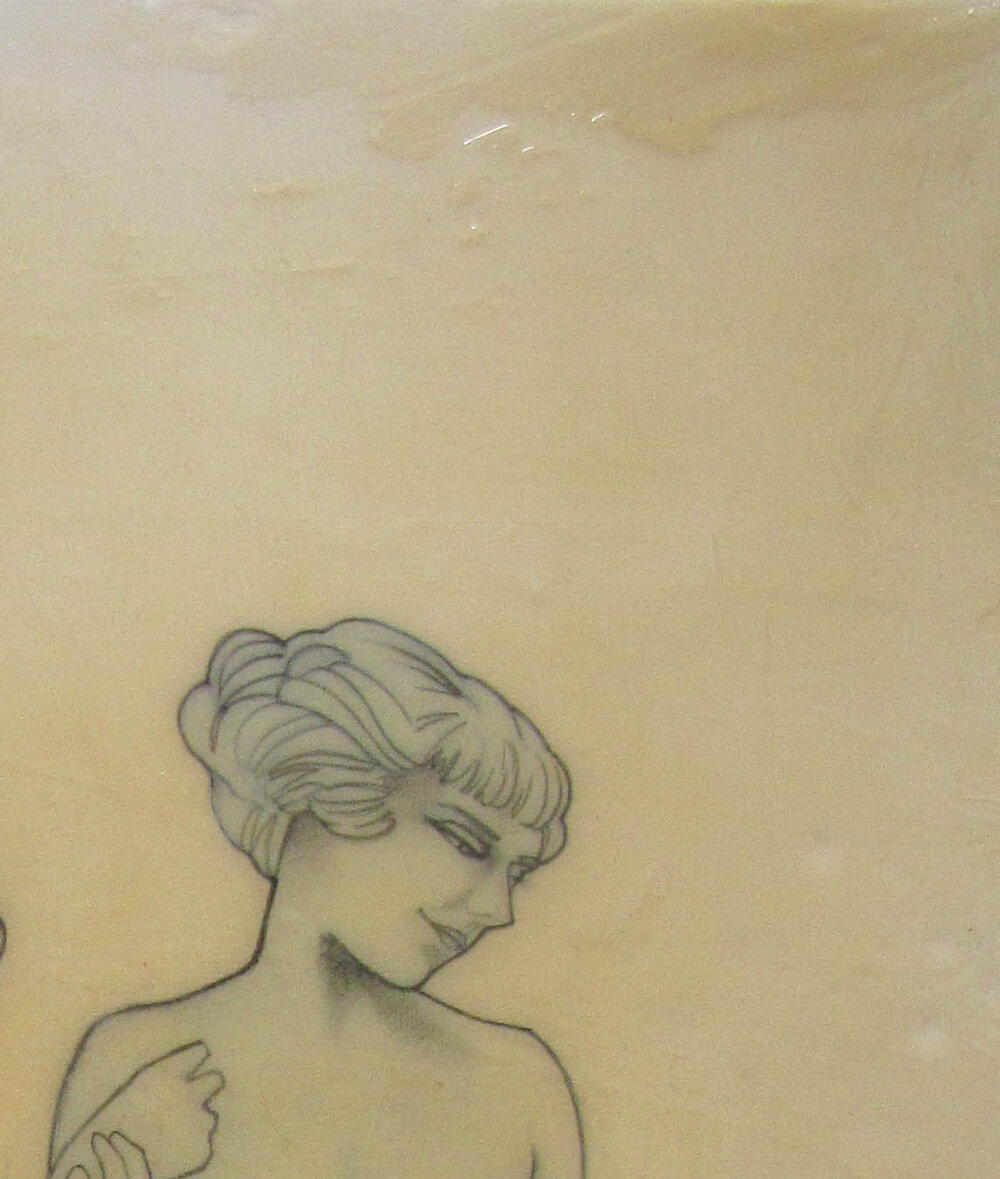What's with the Yellowed Gel?
Amy Shawley
For the spooky month of October I will be covering several "Acrylic Horrors" that I've encountered while working on my painting projects. There are technical issues specific to the acrylic polymer that may be troublesome to your process if you don't understand how your paint is behaving. During my demos and workshops I make sure to hit some of these points regularly because as I started learning about why foam generates in the paint, why color was rubbing off of my substrate, why the paint stayed tacky, etc I became a better acrylic painter since I was better prepared for how to handle the medium.
This week I'm going to share one of the first issues that I encountered with acrylics that made me go "huh?"...Support Induced Discoloration.
I had been painting with oils for awhile and had gotten used to some yellowing with linseed, but when I started working with acrylics and began to build up texture with clear gels, I encountered some yellowing with them and was really surprised...I didn't know that gels yellowed! The thing is, they are not supposed to yellow, I just hadn't prepared my substrate properly.
The polymer binder that makes up everything acrylic is clear and glossy when it's dry, and it's also microscopically porous. Acrylic dries through evaporation, so as air flows in and around your paint film, it's not just evaporating out of the top, it evaporates through the back of the painting support as well...the surfaces "breathes". When you paint over a surface that has impurities like dirts, oils, etc these can leach into your paints/gels, settle into the pores of the paint film and cause discoloration...support induced discoloration, a.k.a. "SID". This SID gets worse when you paint over darker surfaces like untreated woods and masonite, but will also occur on canvas and linens, through layers of gesso. I build most all of my painting supports from untreated woods, so this SID became a huge problem for me.
I began to notice this discoloration when I started painting on wood. I'd gesso the wood, then apply thick layers of clear gel (any clear gel: Soft, Regular, Heavy, Extra Heavy, etc) and as the gel dried it would turn yellow. I later understood this was happening because the impurities of the wood were getting sucked into the acrylic. The thicker the gel layer is, the darker it becomes because more of those impurities will get into the layer.
Now, if you are painting thickly or in opaque layers over this discolored gel, it wouldn't be such a terrible thing...but I was doing glaze layers. What happens when you glaze light blue over a surface that is yellow? It turns green! I once had a painting that I planned out to have a blue background, but there was a dark spot of yellow gel in the background and I just couldn't even out the blue, so I had to change the color scheme to turquoise to accomodate the discoloration.
Fear not readers, for there is hope here, in the form of GAC 100.
GAC 100 is a Special Purpose Polymer that helps prevent this SID. Because of the way it dries, this polymer layer will block impurities from leaving the substrate and making a home in your gel layers. All you have to do is coat the substrate directly BEFORE priming it with Gesso, with a minimum of two layers.
Here are some examples of this SID:

Masonite Panel: Both the left and right sides of this board were gessoed then treated with a thick swipe of Regular Gel (Gloss). On the right side, before I gessoed, I coated the masonite panel with GAC 100. Notice how on the left side, the layer of gel has changed color because it leached the impurities out of the masonite, whereas on the right, the gel retains more clarity.
Also notice how the color I applied shifts when glazed over the side without the GAC 100...the blue turns greenish, and the pink has an orangey cast to it.
I'd like to say that "now everytime before I gesso, I apply GAC 100", but sometimes I forget...especially when I'm painting on pre-primed boards. I like to get the Ampersand or Blick brand painting boards, which are essentially a primed masonite...because they are ready for painting, I get excited and just start painting. Here is a recent goof I made...

I did an image transfer onto a pre-primed hardboard. After the transfer was done, paper removed, I coated the board with Heavy Gel (Gloss)...expecting a nice crystal clear resinous layer to be there when the gel was dry. What I got was a surface with patchy areas of yellowed gel. Yuck! The gel was applied a little thicker in the middle, thinner towards the edges, so you can see the yellowing got worse in the thicker areas...

I intended to do light glaze layers over this background, but now have to paint over with white first to mask out the yellow before I can proceed with my glazes if I want their color to stay intact and not have a yellow cast to them. To prevent this mistake, my first layer should have been GAC 100. To fix this mistake, I'll make a glaze of Titanium White (about 15% white to 85% Polymer Medium) and cover the yellowed gel. Unfortunately for my painting momentum, any time these snags happen my botched projects end up on the Island of Misfit Paintings and I start something new until frustration wanes and I can approach the original project again. It always helps to test your application first and keep a mental check list for how to paint smarter!
If any of you encounter this painting "horror" and need advice for how to fix the yellowed areas, don't hestitate to drop me a line!